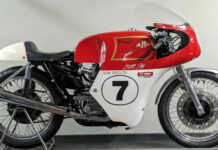May was a particularly busy month for the Kawasaki Racing Team, with three full-on championship rounds, on three different continents, in the space of four weeks. We check out how they made it happen. A Month of Sundays In terms of logistics and planning, the multi-national Kawasaki Racing Team had a more complicated time than most this May, with staff from almost ten different countries arriving at all three WSBK races from many points of the compass. Add in the fact that the team had to get their equipment and machinery from their base in the UK to Monza in Italy at the start, then send it to Kyalami in South Africa (in a big hurry) and then make a slightly more leisurely trans-continental shift to Miller Motorsports Park race in America, and the true scale of this recent task only now emerges. Making sure the mid-season long hauls go smoothly is so important that the team starts working on a plan as soon as they know the initial calendar. Said Team Manager Paul Risbridger, “The first challenge is hotels, because normally you have to get in quick to secure those. But to book them you need to know when you all arrive, when you leave, so you have to have a bit of a plan even then.” It may surprise some to find out that almost the entire logistical effort is carried out by the official team, with only occasional input from other sources. “The teams are responsible for getting all their kit and all their people to and from the races,” said Paul. “There is a championship freight company but it is not compulsory to use them. The main challenge with this championship is the Monza to Kyalami shipment, because it means getting all of your freight out of Italy on Sunday night and getting it all to Kyalami by Wednesday morning at the latest – which is tight by anybody’s standards,” acknowledged Paul. “This year there was a curve ball thrown in because of an ash cloud floating above Europe, which was just an extra factor you did not need when you only have three days in which to get all the kit from Milan to Johannesburg! We were going to use a different freight company from the official one, as we had in Australia, but as time approached the ash cloud problem continued. Our original plan was to road-freight our travel cases up to Zurich, and fly out there on the Monday. But as it turned out Zurich was closed on Monday, so it is just as well that we didn’t do that. If you fly with everybody else on a charter flight, and the charter flight cannot take off, then the event cannot run, because no one will have their kit either. So it was safety in numbers this time round.” Racing in a world championship is clearly a considerable logistical undertaking, particularly for one of the main manufacturer teams, so it’s no surprise that even when only taking the bare minimum, the weight of parts and machinery is still relatively vast. “We ship 14 individual crates of material, and the all-up weight is somewhere between 3,500 and 4,000 kilos,” attests Risbridger. “Freight prices are charged per kilo, and the rate to come from Europe to South Africa to America and back was about 18 Euros per kilo.” Leaving for a long haul from home base is also much easier than doing it the way the team had to this time, as Risbridger explains. “The other challenge with Monza was to not just take our stuff from the UK to Italy but also take all our 14 freight boxes along too. It does take a lot longer to pack everything into containers rather than pack the truck just to drive it back home. The biggest thing in all this weight is that the flight cases themselves are pretty heavy. The bigger cases can be anything up to 100kg, and volume-to-weight you can get around 300kg in each one, so a lot of the weight you are paying to move is actually in the cases!” So what do you really have to take, and what can be left? Paul again, “Because there was a weekend between Kyalami and America, we did not – for example – have to bring out enough bodywork etc because we could have sent more kit direct from the workshop to America if we needed it. With that spare weekend in between races the team could react in the best way to what had happened at the previous race. If you are trying to stock up for too many races in succession then at the start of that trip you are carrying far too much kit.” So far we have spoken about the materials required, but the most important part of any team is the personnel. The overall travel plan for team members who live in Spain, the UK, Italy, the Netherlands, Japan, etc, etc, is complicated enough to give a regular travel agent a nervous breakdown. On the other hand, the long hauls give everyone in the team the chance to see more exotic places, work at different challenging circuits, and have the chance to work together even more closely than the European rounds much of the time, just because of the tightness of the schedules and everyone being so far from home. In terms of pure team and technical support staff 17 did the long haul to Salt Lake, but with riders and their families it went up to 22 in total. Experience has shown that it is both more cost effective, and kinder to the staff, to send them home between races whenever possible. Said Paul, “Flights are generally much more expensive if they are not straightforward returns. Staying away also means three or four more nights in a hotel than you would otherwise have and all the expenses of running those while they are away. So you might as well have a night or two at home. The guys with families are usually better to go home even if it is for just one night because it breaks the trip up, which is psychologically very important. Some of the single guys say it is better to stay out – but it is better for them to go home!” For the committed and well travelled KRT boys and girls, organising the long-haul travel and then jumping on the trans-global carousel in May is all in a year’s work. In racing the next challenge is just around the corner, and the next one for the team is at the seaside in Misano, Italy – a great place to start racing in Europe again. Show business as usual.
Kawasaki’s Factory World Superbike Team Talks About What It Took To Go From Monza To Kyalami To Miller
Kawasaki’s Factory World Superbike Team Talks About What It Took To Go From Monza To Kyalami To Miller
© 2010, Roadracing World Publishing, Inc.





